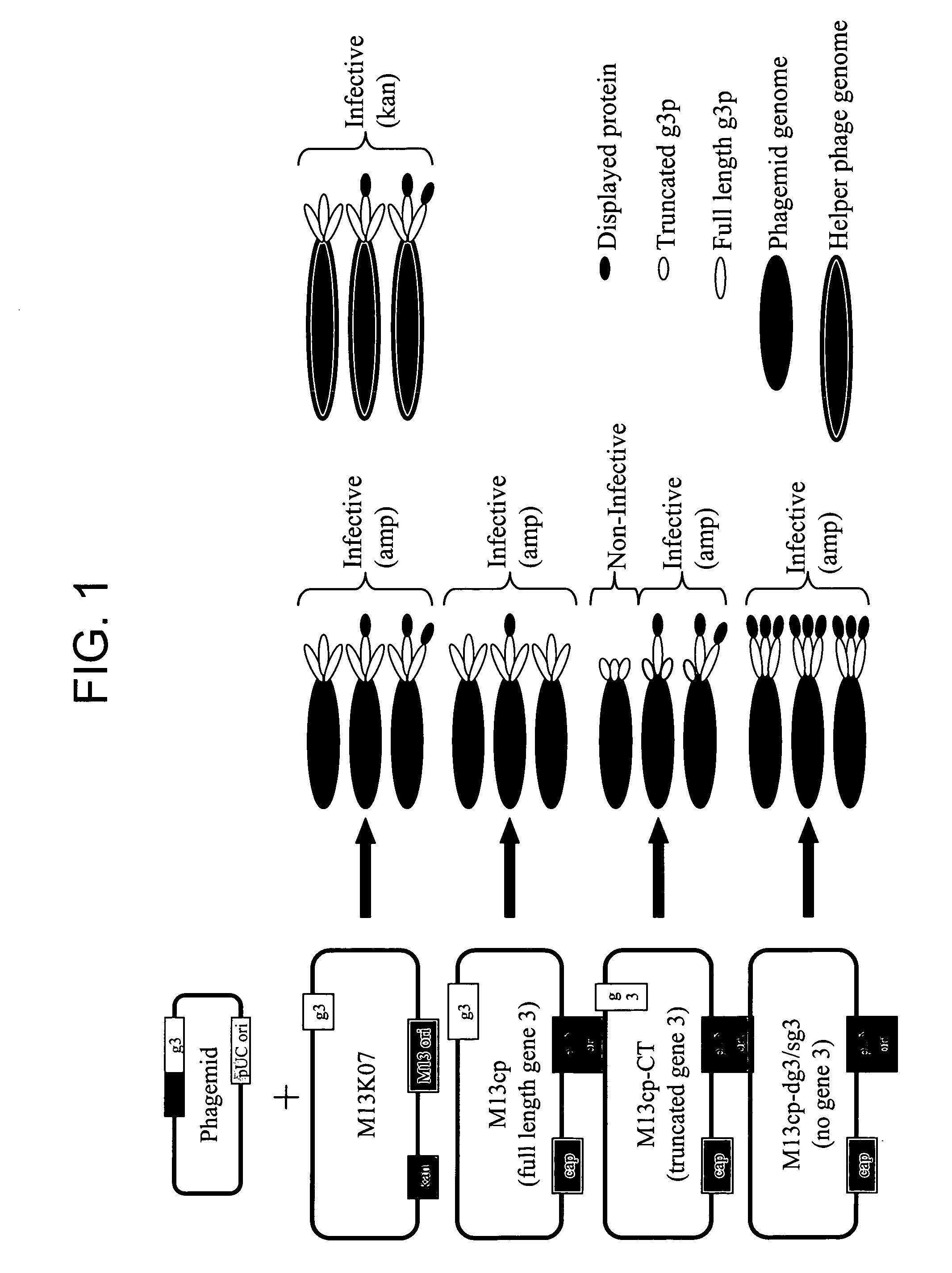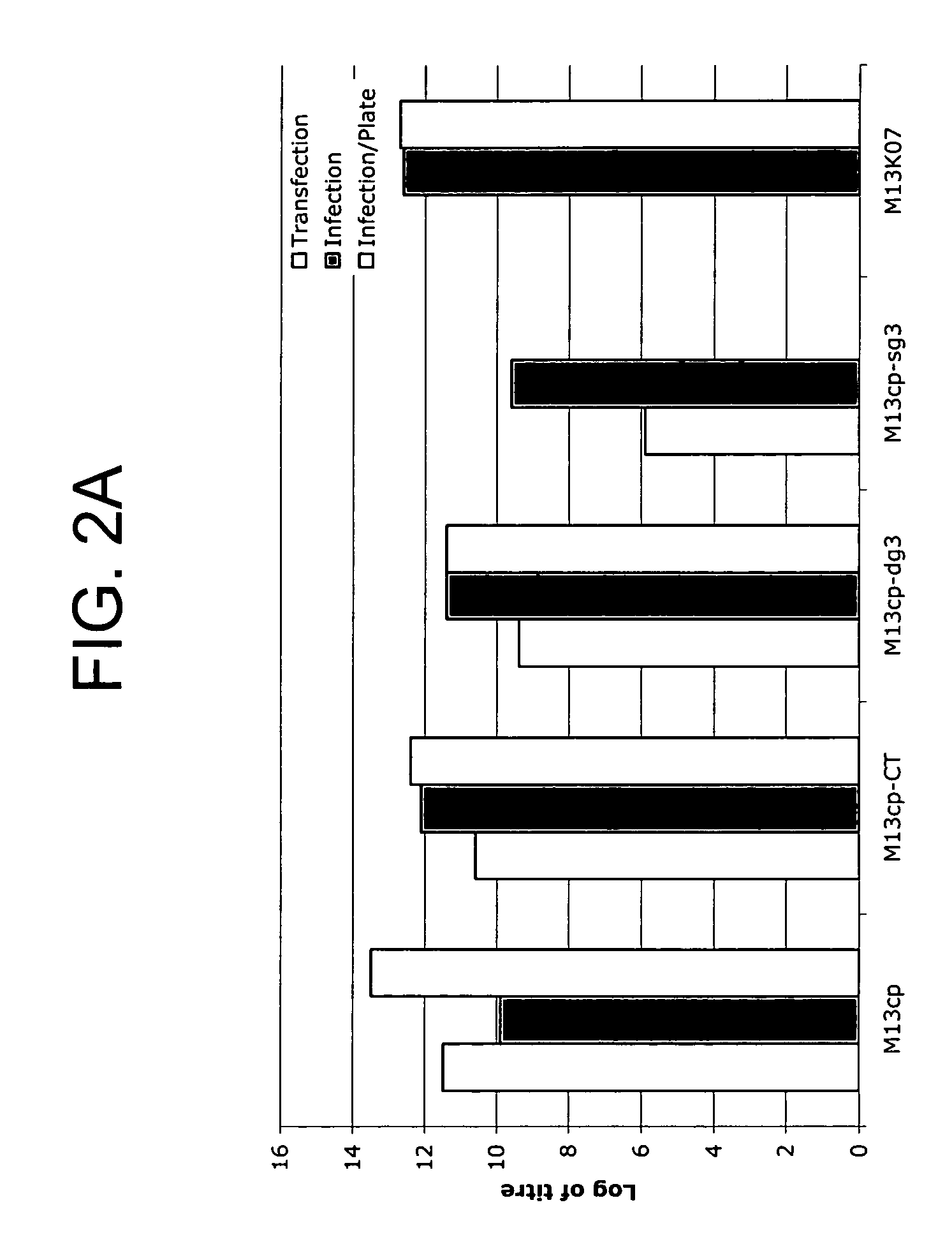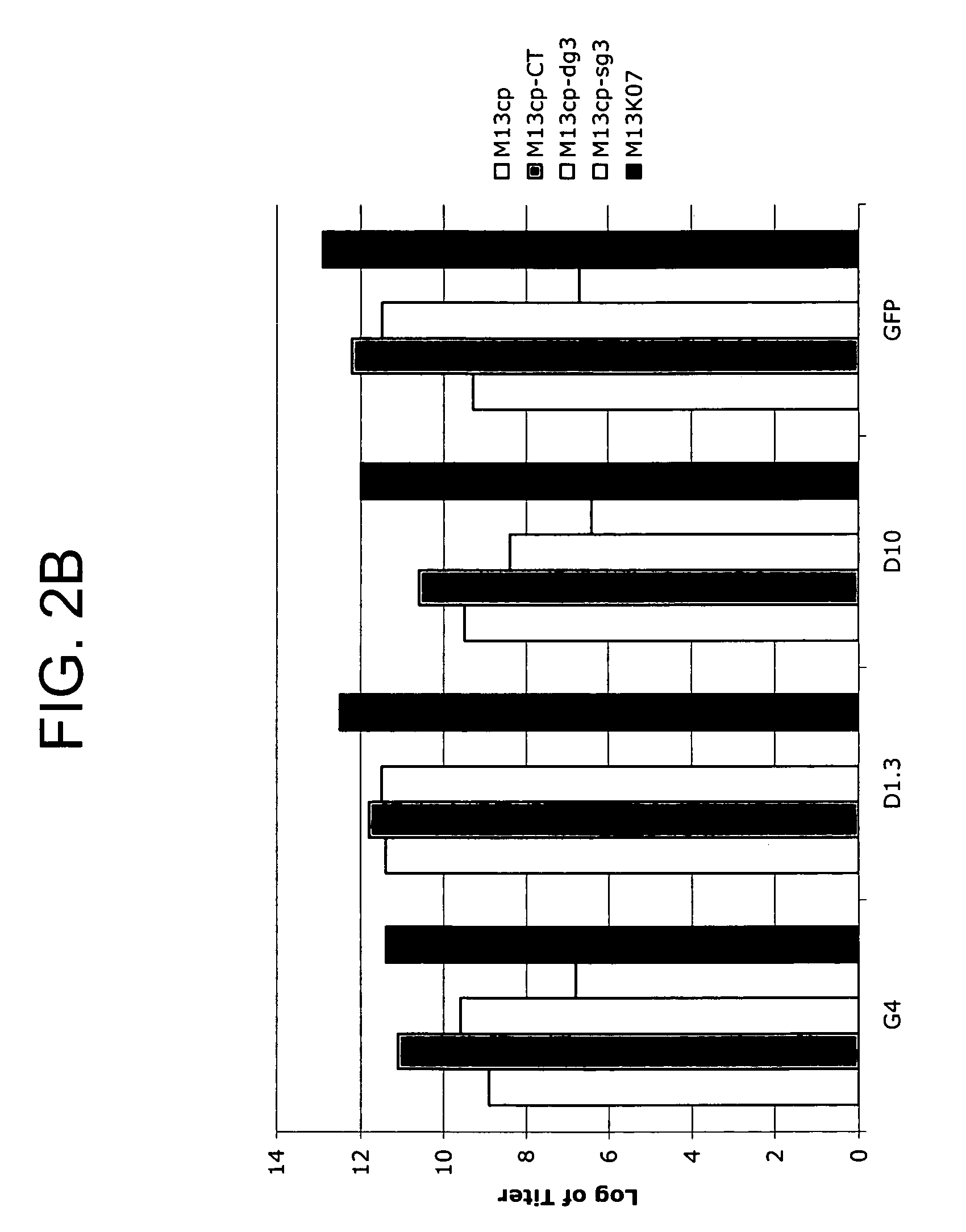Plasmids and packaging cell lines for use in phage display
a technology of phage and cell line, which is applied in the direction of bacteria, biochemistry apparatus and processes, microorganisms, etc., can solve the problems of inability to make phage, significantly compromise subsequent selection, and low levels of soluble protein for most practical purposes, and achieves the effect of simplifying the generation of pure phagemid particle preparations
- Summary
- Abstract
- Description
- Claims
- Application Information
AI Technical Summary
Benefits of technology
Problems solved by technology
Method used
Image
Examples
example 1
Construction and Characterization of M13 Helper Plasmids and E. coli Phagemid Packaging Cell Lines
Materials and Methods:
[0062]M13c was created by amplifying M13-mp19 with two outward facing primers, M13 MluI 5′ (ttg atg acg cgt cct att ggt taa aaa atg agc tg) [SEQ ID NO: 1] and M13 MluI 3′ (ttg atg acg cgt cct aaa tcg gca aaa tcc) [SEQ ID NO: 2] which amplify the whole plasmid and put MluI sites at the junctions between M13 and lac Z. This large PCR product was digested with MluI and the chloramphenicol resistance gene from pBSL12116 cloned in after cutting with MluI. This produced an M13 phage which confers chloramphenicol resistance.
[0063]M13cp was created by amplifying M13c with the two outwards primers, gene 4 3′ (cca cac ctg cag cgc tta atg cgc cgc tac agg gcg cgt act) [SEQ ID NO: 3] and CATgene 5′ (tga ttt ctg cag acg cgt gtc cga att tct gcc att cat cc) [SEQ ID NO: 4]. These primers amplify the whole plasmid without the M13 origin and place PstI sites at the ends. The ...
PUM
| Property | Measurement | Unit |
|---|---|---|
| antibiotic resistance | aaaaa | aaaaa |
| length | aaaaa | aaaaa |
| heterogeneous | aaaaa | aaaaa |
Abstract
Description
Claims
Application Information
 Login to View More
Login to View More - R&D
- Intellectual Property
- Life Sciences
- Materials
- Tech Scout
- Unparalleled Data Quality
- Higher Quality Content
- 60% Fewer Hallucinations
Browse by: Latest US Patents, China's latest patents, Technical Efficacy Thesaurus, Application Domain, Technology Topic, Popular Technical Reports.
© 2025 PatSnap. All rights reserved.Legal|Privacy policy|Modern Slavery Act Transparency Statement|Sitemap|About US| Contact US: help@patsnap.com



